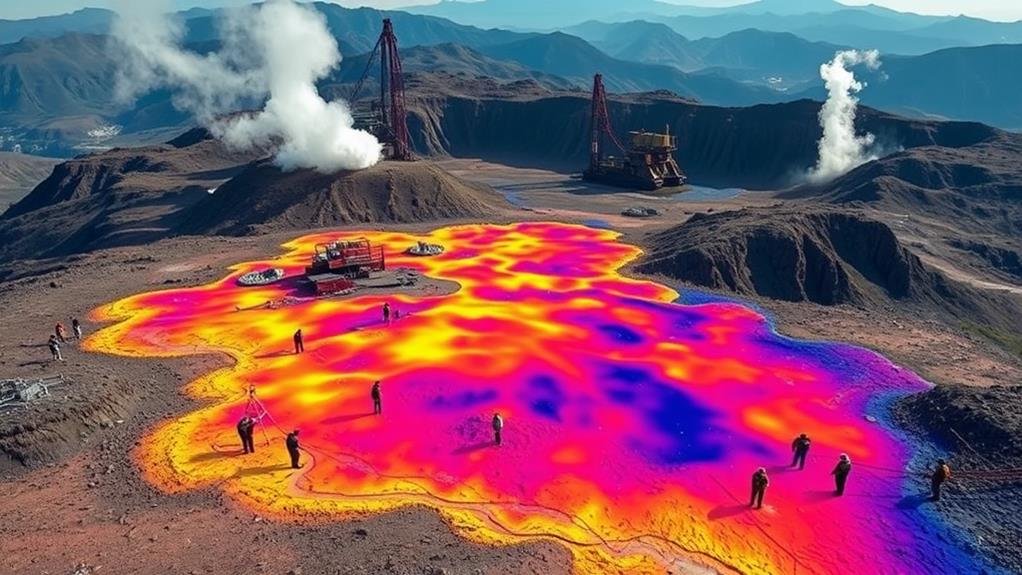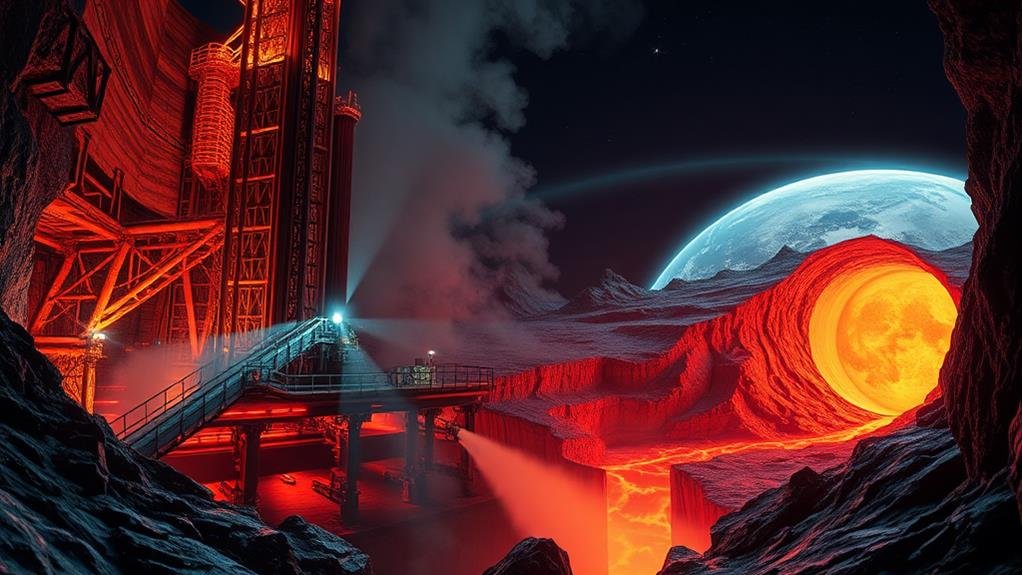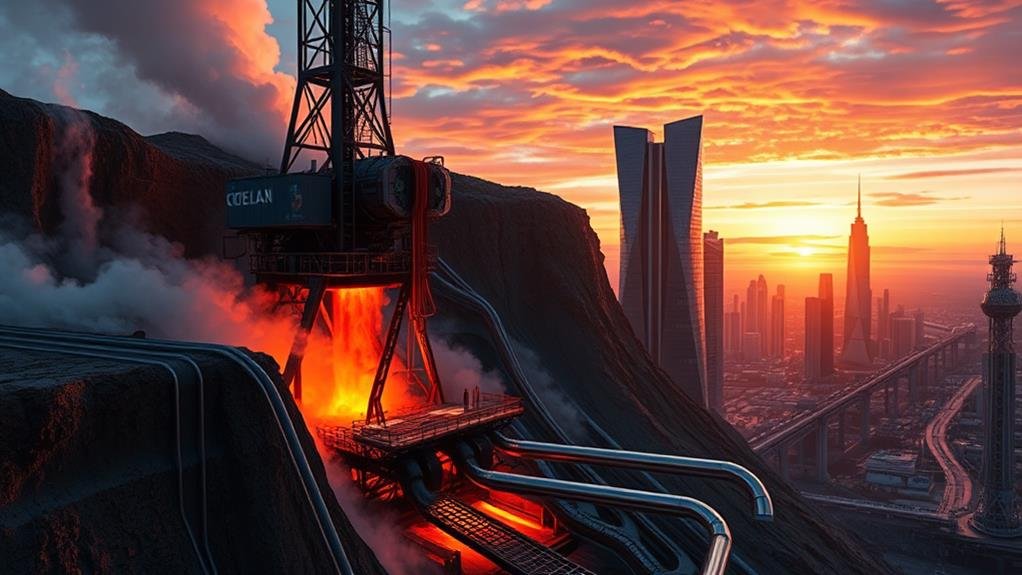The geothermal revolution is changing how we think about renewable energy. Geologists are now studying deep, hot rock formations, and their latest research has uncovered interesting insights into how these rocks behave under extreme conditions. This research indicates that we might be able to extract energy from the Earth more efficiently than ever before.
This development is significant because it could lead to a major shift in how we generate sustainable power. It raises important questions about how quickly we can turn this scientific knowledge into real-world applications. The potential impact on the global energy sector is enormous, as this could lead to more reliable and accessible renewable energy sources.
As we look ahead, it's crucial to consider how these advancements can be implemented effectively. For instance, countries that invest in geothermal technology could see not only energy independence but also job creation and economic growth. Overall, this breakthrough could be a key factor in our transition to a cleaner energy future.
Confirming Geothermal Potential

Geologists have long been interested in the potential of superdeep, superhot rock as a renewable energy source. Recent research published in Nature Communications has provided strong evidence to support this idea. The study shows that superhot rock can develop fractures, which increases its permeability and improves the economics of resource extraction. These fractures play a crucial role in energy transport, especially when they are filled with supercritical water.
The research indicates that rock fractures under extreme temperatures are not only more permeable but also more adaptable, making them well-suited for geothermal energy extraction. This new understanding of how rock behaves in extreme conditions could lead to more effective and productive geothermal systems.
Tapping into these superdeep, superhot resources has the potential to significantly boost geothermal energy production. This could be a game-changer for the renewable energy sector, providing a viable solution to meet global energy needs. By investing in this area, we could harness a powerful energy source that supports sustainability and reduces our reliance on fossil fuels.
Geological Debates and Discoveries
Geologists have been debating whether it is practical to harness superdeep, superhot geothermal resources. The main question has been whether the rock found under extreme pressures and temperatures can form the necessary fractures for extracting energy. Recent research from the Ecole Polytechnique Fédérale de Lausanne has shown that rock near the brittle-to-ductile transition can indeed be fractured. This finding supports the idea that ultradeep geothermal exploration is feasible.
Understanding how rock behaves under these extreme conditions is crucial for successful drilling operations. Led by Marie Violay, the research has revealed that rock can develop dense networks of permeability when subjected to superhot conditions.
This is a significant discovery for enhanced geothermal systems, as it suggests that the energy output could increase five to ten times compared to current systems. This potential advancement in geothermal energy could play a vital role in meeting future energy demands while reducing reliance on fossil fuels.
Breakthroughs in Extreme Conditions

Recent breakthroughs in geothermal research have revealed unexpected behaviors of rocks under extreme conditions. Studies show that superhot, superdeep rock behaves similarly to Silly Putty when subjected to pressure. It can stretch and adapt to gradual stress, but it fractures when sudden pressure is applied. This unique behavior leads to a high density of permeability within the rock, significantly enhancing its geothermal potential.
Simulations suggest that these superhot geothermal systems could produce 5 to 10 times more energy than existing geothermal facilities, and they could maintain this production over a long period. Additionally, the presence of supercritical water within these fractures enhances energy transport, making these findings particularly noteworthy. They indicate that rocks near the transition from brittle to ductile can be effectively fractured, supporting the pursuit of ultradeep geothermal exploration.
Marie Violay and her team at the École Polytechnique Fédérale de Lausanne have been at the forefront of this research. They have developed innovative experimental equipment that allows them to simulate deep supercritical conditions, enabling them to gather detailed data on geothermal processes. This work is crucial as it opens up new avenues for energy production, potentially transforming our approach to geothermal energy.
Rock Behavior Under Stress
The way rock behaves under stress is crucial for understanding the potential of geothermal energy. Recent studies have shown that superhot, superdeep rock acts somewhat like Silly Putty when put under stress. When the stress is applied slowly, the rock can stretch and return to its original shape, demonstrating elastic behavior.
However, when stress is applied quickly, the rock fractures, creating small cracks. These fractures increase the rock's permeability, which is important for harnessing geothermal energy.
Interestingly, superhot geothermal systems could produce 5 to 10 times more energy than our current systems. Computer simulations suggest that these extreme conditions can lead to sustained power generation over the long term. Specifically, rocks near the point where they become brittle and ductile can break apart, which is a key factor for drilling operations.
To successfully explore geothermal energy, it's essential to understand how strong the rock is and how far the fractures extend. This knowledge not only supports the feasibility of ultradeep geothermal exploration but also highlights the promise of enhanced geothermal systems. By focusing on these aspects, we can better tap into the vast energy potential that lies beneath the Earth's surface.
Cutting-Edge Experimental Approaches

Cutting-edge experimental methods are changing how we understand geothermal processes. At EPFL, researchers use a special machine that can mimic the extreme conditions found deep underground, making it one of the few facilities in the world with this capability. This innovative setup, paired with X-ray imaging from the European Synchrotron Radiation Facility, allows scientists to observe geothermal phenomena in detail.
Various funding sources, including Quaise Energy and the European Research Council, support this research, which has led to important discoveries about how rocks behave under intense heat and pressure.
The experiments have shown that superdeep, superhot rocks can develop fractures, which improves their ability to allow fluids to flow and transport energy. These findings indicate that superhot geothermal systems might generate 5 to 10 times more power compared to existing systems. This could greatly enhance renewable energy production.


